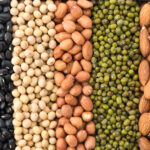In recent years, there has been an increased awareness of adverse reactions to wheat and gluten-containing products. While the terms “wheat allergy” and “non-celiac gluten sensitivity” are often used interchangeably, they refer to distinct conditions with different underlying mechanisms. Understanding the differences between these two conditions is crucial for accurate diagnosis and appropriate management. In this article, we will explore the key differences and overlapping symptoms of wheat allergies and non-celiac gluten sensitivity.
Wheat Allergies: A wheat allergy is an immune-mediated response to specific proteins found in wheat. When a person with a wheat allergy consumes or comes into contact with wheat, their immune system recognizes certain wheat proteins as harmful, triggering an allergic reaction. The two primary proteins responsible for wheat allergies are gliadin and glutenin.
Symptoms: The symptoms of a wheat allergy can vary in severity and may include:
- Skin reactions: Itching, hives, eczema, or swelling.
- Gastrointestinal issues: Nausea, vomiting, abdominal pain, or diarrhea.
- Respiratory problems: Wheezing, coughing, runny nose, or difficulty breathing.
- Anaphylaxis: A severe, life-threatening allergic reaction characterized by swelling of the throat, difficulty breathing, rapid pulse, and a drop in blood pressure.
It’s important to note that wheat allergies are relatively rare, affecting less than 1% of the population. In severe cases, strict avoidance of wheat and wheat-containing products is necessary to prevent allergic reactions.
Non-Celiac Gluten Sensitivity: Non-celiac gluten sensitivity, also known as non-celiac wheat sensitivity, is a condition in which individuals experience symptoms similar to those of celiac disease but without the characteristic intestinal damage or immune response associated with celiac disease. The exact mechanisms underlying non-celiac gluten sensitivity are not yet fully understood, and further research is ongoing.
Symptoms: The symptoms of non-celiac gluten sensitivity can manifest in various ways and may include:
- Digestive problems: Abdominal pain, bloating, gas, or diarrhoea.
- Fatigue: Feeling tired or lethargic after consuming gluten.
- Neurological symptoms: Headache, brain fog, or difficulty concentrating.
- Joint and muscle pain: Stiffness, swelling, or general discomfort.
- Mood disorders: Depression, anxiety, or irritability.
It is worth mentioning that the symptoms of non-celiac gluten sensitivity can be similar to those of other conditions, such as irritable bowel syndrome (IBS) or wheat allergy, making it important to rule out other potential causes through proper medical evaluation.
Key Differences and Overlapping Symptoms: While wheat allergies and non-celiac gluten sensitivity share some common symptoms, there are several key differences between the two conditions. The most significant distinction lies in the underlying mechanisms. Wheat allergies involve an immune response triggered by specific proteins in wheat, whereas non-celiac gluten sensitivity does not involve an immune reaction but rather a sensitivity to gluten.
Another critical difference is that individuals with non-celiac gluten sensitivity do not experience the intestinal damage seen in celiac disease. In contrast, celiac disease is an autoimmune disorder in which the ingestion of gluten leads to damage to the small intestine. Celiac disease is characterized by specific genetic markers and the presence of certain antibodies.
It is essential for individuals experiencing symptoms related to wheat or gluten consumption to consult with a healthcare professional for an accurate diagnosis. Medical evaluations may include blood tests, endoscopic procedures, and elimination diets to differentiate between wheat allergies, celiac disease, and non-celiac gluten sensitivity.
Wheat allergies and non-celiac gluten sensitivity are distinct conditions with different underlying mechanisms. Wheat allergies involve an immune-mediated response to specific proteins in wheat, while non-celiac gluten sensitivity refers to a sensitivity to gluten without an immune reaction or intestinal damage. Understanding these differences and recognizing the overlapping symptoms is vital for proper diagnosis, management, and ultimately, improving the quality of life for those affected by these conditions.








